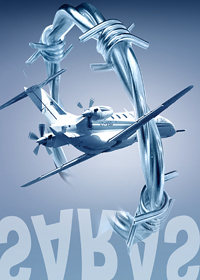INDIAN ARMED FORCES CHIEFS ON OUR RELENTLESS AND FOCUSED PUBLISHING EFFORTS

The insightful articles, inspiring narrations and analytical perspectives presented by the Editorial Team, establish an alluring connect with the reader. My compliments and best wishes to SP Guide Publications.

"Over the past 60 years, the growth of SP Guide Publications has mirrored the rising stature of Indian Navy. Its well-researched and informative magazines on Defence and Aerospace sector have served to shape an educated opinion of our military personnel, policy makers and the public alike. I wish SP's Publication team continued success, fair winds and following seas in all future endeavour!"

Since, its inception in 1964, SP Guide Publications has consistently demonstrated commitment to high-quality journalism in the aerospace and defence sectors, earning a well-deserved reputation as Asia's largest media house in this domain. I wish SP Guide Publications continued success in its pursuit of excellence.
- The layered Air Defence systems that worked superbly, the key element of Operation Sindoor
- Operation Sindoor | Day 2 DGMOs Briefing
- Operation Sindoor: Resolute yet Restrained
- India's Operation Sindoor Sends a Clear Message to Terror and the World – ‘ZERO TOLERANCE’
- Japan and India set forth a defence cooperation consultancy framework, talks on tank and jet engines
Keep Saras Alive

Despite the recent tragedy in Bengaluru, NAL must continue not only with the Saras project but also with its plans to develop the RTA
Disasters can derail the best of intentions. Just when everything seemed to be finally going well for the Saras project, the loss of the Prototype-II (PT-II) on March 6 on the outskirts of Bengaluru has come as a debilitating blow to national aspirations of making the first indigenously designed and built multi-role light transport aircraft a reality. The Saras is meant both for civil and military use and series production is to be undertaken at the Kanpur facility of Hindustan Aeronautics Limited (HAL).
The tragic accident in which three highly rated professionals from the test-flying community of the IAF perished has served to revive memories of a similar disaster on January 12, 1999 that struck the indigenous Avro-based Airborne Surveillance Platform (ASP) programme of the Centre for Airborne Systems. Then, eight on board including four scientists, had lost their lives. As a result of the accident, the ASP programme which was in an advanced stage was rather unwisely shelved only to be revived two decades later with a new platform, the Embraer ERJ 145.
Running for over 20 years, the Saras programme was earlier hit by US sanctions following Pokharan-II. Faced with a slew of technical hurdles, including that of being overweight, the project was successively ironing out the issues despite the general impression that it is not progressing well. Mysterious crash of the PT-II has, therefore, fueled widespread speculation in the media about the technical viability of the aircraft, besides questioning the future of the Saras project itself.
Feasibility studies on the Saras project commenced in 1988 at the National Aerospace Laboratories (NAL) in Bengaluru. Sixteen years later, the PT-I undertook its maiden flight on May 29, and has logged over 100 hours of developmental test flying since then. The ill-fated Prototype-II, somewhat lighter than its predecessor, was on the 49th test flying mission. The mission profile involved shutting down and relighting the engines one by one in flight while operating at an altitude of 8,000 ft above ground level. Apparently, this exercise is simple as it does not require the aircraft to be pushed aerodynamically to the limits of its operating envelope. The aircraft had flown for nearly 45 minutes when some unforeseen development or failure appears to have overwhelmed the crew. Eyewitnesses’ accounts speak of the aircraft somersaulting or taking two rounds before hitting the ground. They also recount fire and explosions only after impact. These observations by the rural folk in the area suggest that the aircraft was possibly in a spin. A twin-engine transport aircraft could end up in a spin if due to some reason it encounters an asymmetric power situation, particularly at low speed, and the pilot runs out of rudder to maintain directional control. What is intriguing, however, is that there was no radio transmission at all by the crew about the nature of problem encountered.
An investigating team from the Director General of Civil Aviation, assisted by specialists from the Indian Air Force (IAF), NAL and HAL, will search for clues in the wreckage and glean information from the Flight Data Recorder, the Cockpit Voice Recorder and telemetry data to reconstruct the sequence of events and establish the precise cause of the accident. Meanwhile, all stake holders, including the IAF and the Indian Navy, who together could acquire up to 60 aircraft, need to remain committed to the programme.
Development of a modern aircraft is indeed a tedious and a time-intensive process. Also, test flying of a prototype has inherent risks which for the aircrew constitute occupational hazard. Delay in the process of development of new aircraft, mishaps and loss of lives in test flying are neither unknown nor unique to the Indian aerospace industry. Even high profile development projects in the technologically advanced nations, both in the regime of civil and military aircraft, have suffered delays, disasters or both. What is important is that the agencies involved in the Saras project learn the right lessons from the accident, incorporate the necessary changes in the PT-III and move forward with the programme with greater resolve. Fortunately, there are favourable signals emanating from the government for continued support for the programme.





